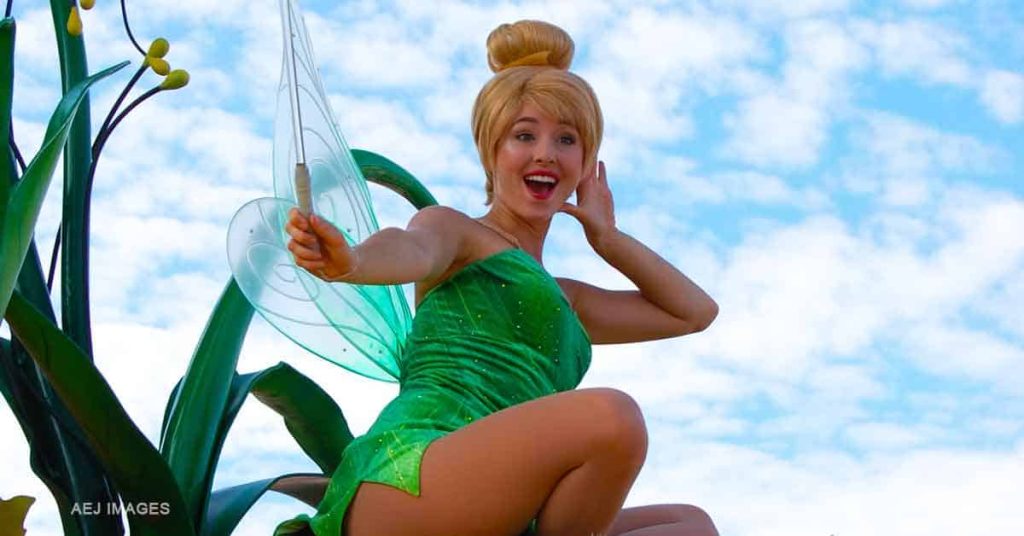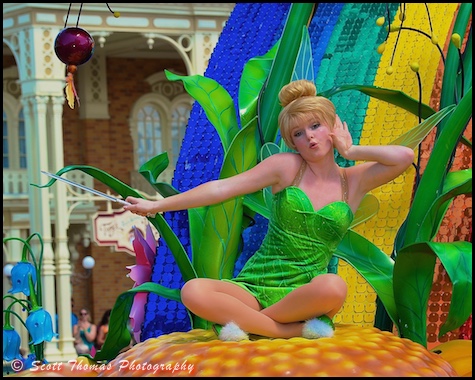
Another Casualty of Woke Culture
In a move that has stirred controversy among Disney fans, the iconic character Tinkerbell has been quietly removed from meet-and-greets at Disney World, signaling what some see as another capitulation to the pressures of “woke culture.”

The decision to sideline Tinkerbell, a beloved figure from Disney’s classic “Peter Pan” movie, comes amidst growing scrutiny of the character’s portrayal. According to a report by The New York Times in 2022, Disney, in response to internal criticism and pressure from its “Stories Matter” team, has opted to distance itself from Tinkerbell’s traditional depiction, citing concerns about her alleged “body consciousness” and jealousy of Peter Pan’s attention.

This move, however, has sparked outrage among those who see it as yet another example of political correctness run amok. Critics argue that Tinkerbell’s removal represents an unnecessary surrender to the whims of the “cancel culture” mob, which seeks to erase cherished traditions and characters under the guise of progressivism.
Moreover, this decision is viewed by many as part of a broader trend within Disney to sanitize its content and cater to the demands of a vocal minority. The company’s willingness to bow to internal pressure and modify longstanding characters like Tinkerbell reflects a troubling shift away from the entertainment values that once defined the Disney brand.
Nelson Peltz, a billionaire investor who has been critical of Disney’s recent trajectory, has lambasted the company’s decision-making process, arguing that audiences do not flock to Disney movies for social commentary or ideological messaging.
“People go to watch a movie or a show to be entertained,” said Peltz in an interview with the Financial Times in April. “They don’t go to get a message.”
Indeed, the removal of Tinkerbell from meet-and-greets at Disney World is seen by many as a symptom of a broader cultural battle raging within the entertainment industry. Traditionalists lament the loss of beloved characters like Tinkerbell, while progressives applaud Disney’s efforts to modernize its content and promote inclusivity.
As Disney continues to navigate these choppy waters, one thing remains clear: the decision to sideline Tinkerbell is unlikely to quell the ongoing debate surrounding the company’s commitment to its timeless legacy versus its embrace of contemporary social norms.

Critics argue that the removal of Tinkerbell is just the latest in a series of missteps by Disney, which has increasingly come under fire for its perceived pandering to progressive ideologies. From altering classic attractions like Splash Mountain to accommodate modern sensibilities to injecting political messaging into its films and television shows, Disney’s once-universal appeal is being eroded by a relentless push for political correctness.
Furthermore, some observers contend that Disney’s decision to remove Tinkerbell reflects a broader trend of corporations caving to the demands of a vocal minority at the expense of their core audience. By prioritizing the concerns of a select few over the preferences of the majority, Disney risks alienating its most loyal fans and jeopardizing its longstanding status as a cultural touchstone.
The controversy surrounding Tinkerbell’s removal has reignited debates about the role of political correctness in shaping popular culture. While proponents argue that it is essential to promote diversity and inclusivity in media representation, detractors warn against the dangers of censorship and artistic compromise.
At the heart of this debate lies the question of artistic integrity versus social responsibility. Is it the role of entertainment companies like Disney to challenge societal norms and push boundaries, or should they prioritize the preservation of cherished traditions and cultural icons?
For many, Tinkerbell represents more than just a fictional character; she is a symbol of childhood innocence and imagination. Her removal from meet-and-greets at Disney World is seen as a betrayal of the values that Disney once stood for, a stark reminder of the company’s willingness to sacrifice its heritage on the altar of political correctness.

“We are reviewing our offerings beyond the screen, which include products, books, music and experiences,” reads the Stories Matter homepage on Disney’s website. “While advisories for negative depictions of people and cultures may be added to some offerings, others will be reimagined. We are also investing in new ways to better reflect the rich diversity of stories in our world. This work is ongoing and will evolve as we strive toward a more inclusive tomorrow.”
In the end, the fate of Tinkerbell may serve as a litmus test for Disney’s future direction. Will the company continue down the path of appeasement, forsaking its legacy in pursuit of social justice? Or will it heed the voices of its loyal fans and reaffirm its commitment to timeless storytelling and beloved characters?
Only time will tell. But one thing is certain: the controversy surrounding Tinkerbell’s removal is far from over, and the battle for the soul of Disney is just beginning.
